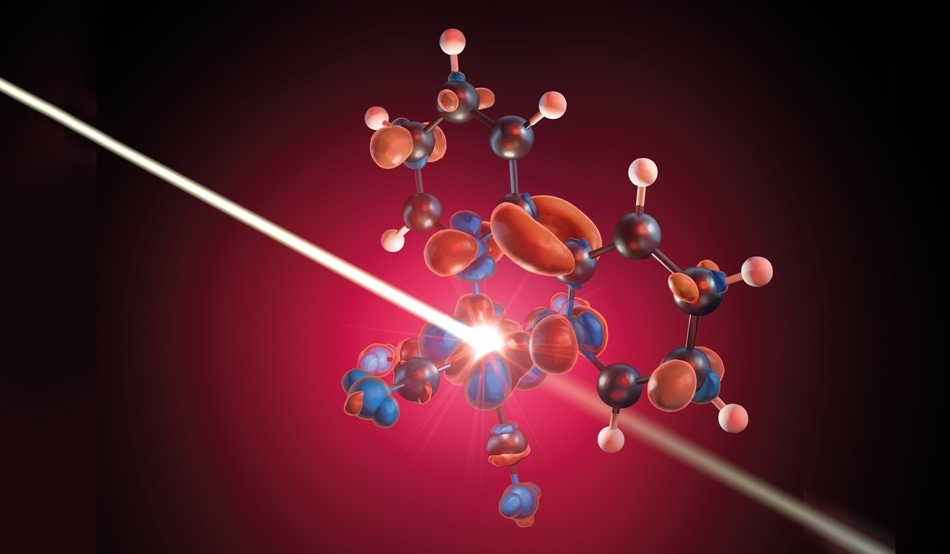Jul 10 2019
Light is converted into electrical energy by transition-metal complexes present in dye-based solar cells. This conversion has been described using a model of spatial charge separation inside the molecule.
 An X-ray pulse probes the delocalization of iron 3d electrons onto adjacent ligands. (Image credit: M. Künsting/HZB)
An X-ray pulse probes the delocalization of iron 3d electrons onto adjacent ligands. (Image credit: M. Künsting/HZB)
Conversely, at BESSY II, an analysis showed that this process description is extremely simple. Now, for the first time, a research team has examined the underlying photochemical processes around the metal atom as well as its ligands. The study has been recently reported in “Angewandte Chemie, International Edition” and is featured on the cover.
Grätzel cells are a type of organic solar cells that contain dyes based on compounds of transition-metal complexes. The outer electrons of the complex are excited by sunlight in such a way that they get transported from orbitals at the middle of the metallic complex into orbitals of neighboring compounds.
So far, it was believed that charge carriers were spatially isolated in this process and subsequently stripped off so that an electric current can flow easily. But now, a research team led by Alexander Föhlisch at Helmholtz Zentrum Berlin (HZB) was able to explain that this is not the case.
The researchers used the short X-ray pulses of BESSY II in low-alpha mode to track each step of the process in an iron complex activated by photo-excitation with a laser pulse.
We can directly observe how the laser pulse depopulates the 3d orbitals of the metal.
Raphael Jay, Study First Author and PhD Student, HZB
With the aid of hypothetical calculations, the researchers accurately deduced the measurement data from time-resolved X-ray absorption spectroscopy. The subsequent picture emerges—at first, electrons from the 3d orbital of the iron atom are delocalized onto the neighboring ligands by the laser pulse.
Conversely, these ligands consecutively and instantly force electronic charge back into the metal atom’s direction, thus readily offsetting the loss of charge at the metal and the corresponding separation of the initial charge carrier.
These discoveries may help in developing novel materials for dye-sensitized solar cells. So far, only ruthenium complexes have been utilized in organic solar cells. Since ruthenium is a rare element, it is quite expensive. By contrast, iron complexes would be considerably more cost-efficient, but these are characterized by high recombination rates between charge carriers.
More research is needed to expose the order of the mediating features in transition-metal complexes to realize the efficient conversion of light into electrical energy.
The study is titled “Covalency-driven preservation of local charge densities in a metal-to-ligand charge-transfer excited iron photosensitizer.”